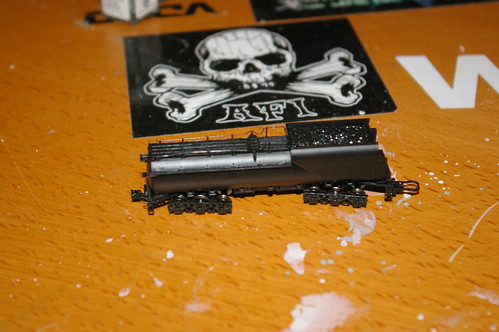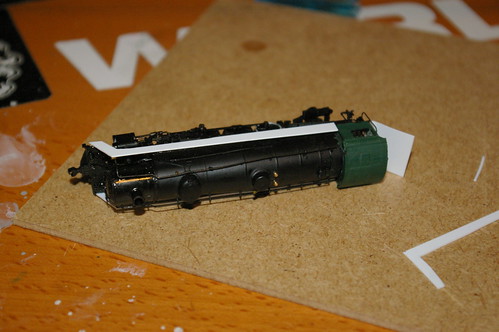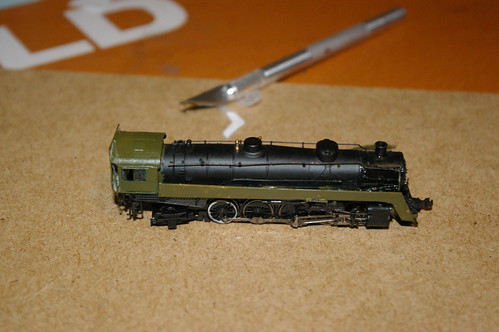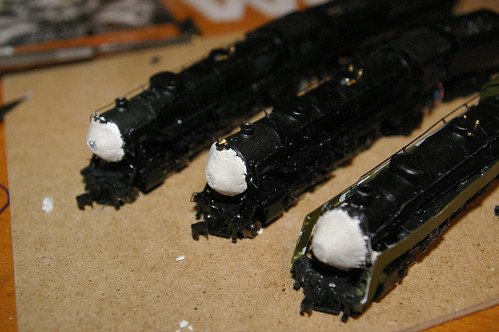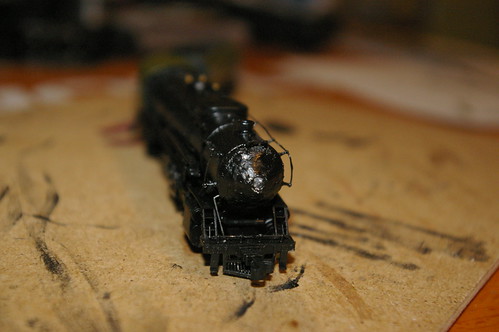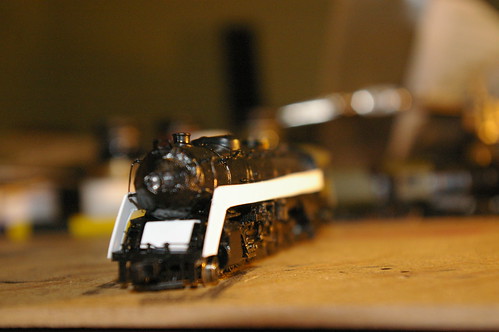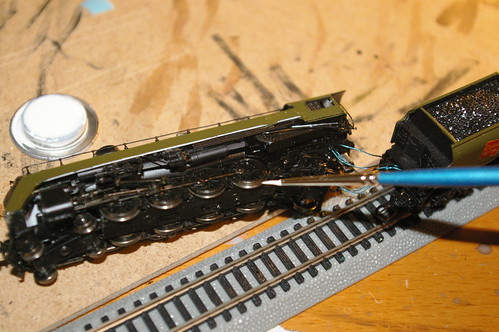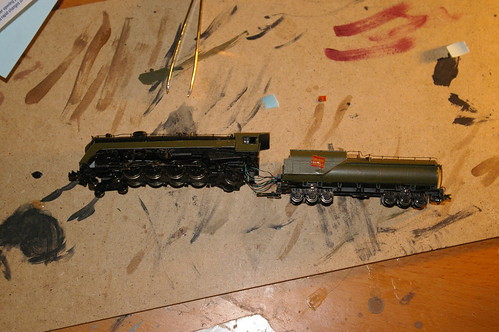Sit down and grab a cup, because this is the home stretch!!
Where we left off last time was the clay noses applied to the locos. Well... they have been painted and here are some 'before the finals' shots.. The following is using one of the Heavy Mountains... in fact this one will be my MAIN U1f and decaled #6060.
So the first step to finalizing the design was to finish off everything in front of the cab. This meant cutting some styrene for the sides and the lil box under the smoke box.
As you can see that worked out pretty well! :mrgreen:
Then it was time for paint! I painted the styrene that was just applied and then realized I should have painted the pieces before gluing them in place... would have made it a lot easier!
Anyways, after that I worked on the white-walls for the drivers... As you can see I took the previous suggestion of applying power to the loco and then using some throttle... take the brush to the wheels edges.
How wonderful is that?!
I was on such a roll I decided to start decalling... then the poo hit the fan! wall1
The microscale decals I have (and the only set I can find for CN streamlined steam) must either be really old... or the quality of the microscale decals is just not very good... I have FOUR of the tender logos before this... so enough for two locomotives. I used THREE up on just the one side... they keep falling apart! I'm very distrot and scared that I only have one possible attempt at the other side of the tender...
As you can see, not even that one turned out very well...
Anyways... I put the loco on the tracks to see what she looks like with some passenger cars behind her. Not too shabby!
Sorry about the bad focus... I can't find my macro lens anywhere!
Anyways, only a few more things to finish up... I need to find the Bell for this loco... its on my workbench somewhere, but it's so bloody tiny I don't know where it coulda gone. I just hope it didn't fall into the carpet where it will be lost forever.

I've emailed Bachmann a few times if they will do replacement bells for this loco, but they have never gotten back to me... so I'm really worried.
After the bell I will have to do the cab conversion, and then the final decal applications... After that, I will have one very pretty piece of Canadian Steam on my layout! Oh happy day! :thumb:












